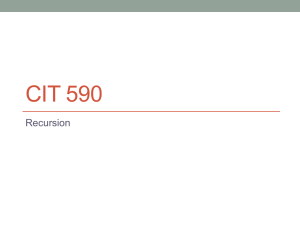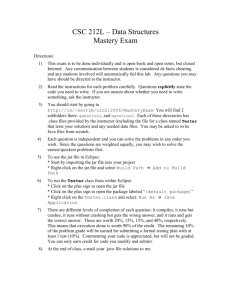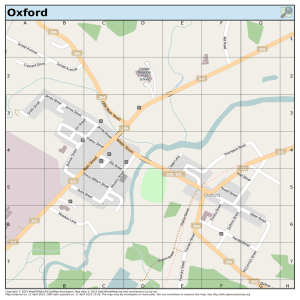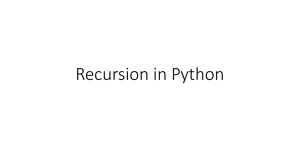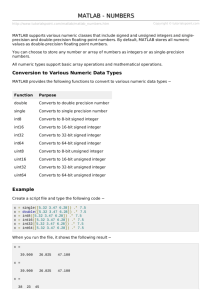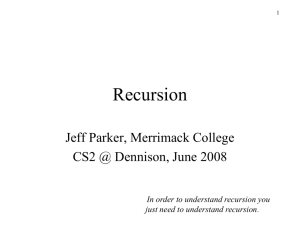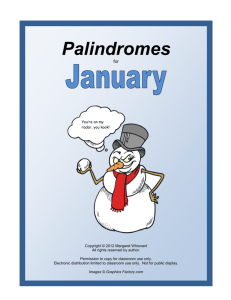x - Dalton State College
advertisement
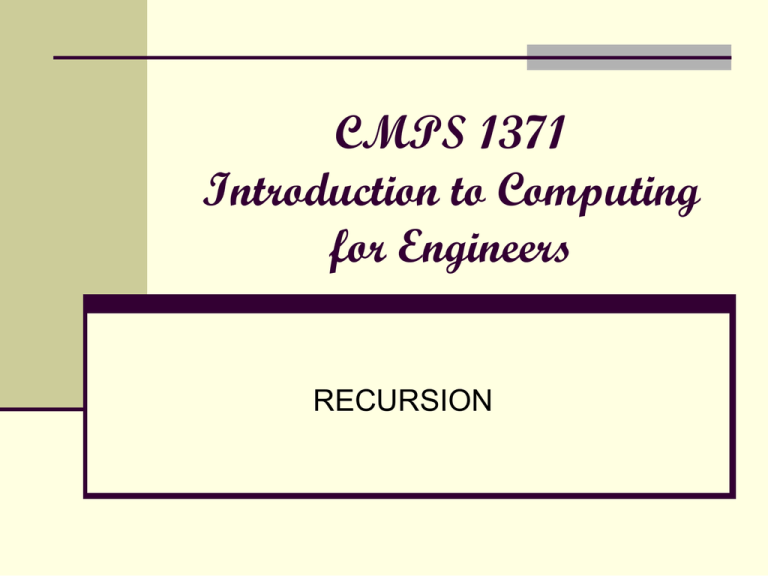
CMPS 1371
Introduction to Computing
for Engineers
RECURSION
Recursion
Simple
definition:
When a function calls itself
Why:
Simple reason: often a problem can
reduce to exactly the same problem
but on a slightly simpler task
Recursion
Examples:
Factorial
n! = (n)(n-1)(n-2)...(3)(2)(1)
Fibonacci
Fn = Fn-1 + Fn-2
A "stack"
Last one in is first one out (LIFO)
Takes the element on top
regardless of size
Not too hard to get to recent
ones…
A stack is used for functions to get space for it's
arguments, internal data, and it's return location
Each call to a function gets the room it needs on
the stack ("pushed" onto the stack).
Allows calling function over and over…
Recursion vs Iteration
Iteration
for
loops and while loops that solve a
problem by iterating through steps
Recursion
functions
that call themselves, moving
towards one or more base cases
Sum function
As you may know, finding the sum of a vector in
MATLAB is easy—we can use the built-in MATLAB
function sum():
<< x = [1 2 3];
<< sum(x)
ans =
6
However, it is an important programming skill to know
how to find the sum of a vector (or an array) without
using a built-in function, because many languages do
not have such a function.
Iteration for sum function
function result = sum1(x)
for i=1:length(x)
result = x(i) + result;
end
Adds each element
to result
Recursion for sum function
There are only three possibilities for a vector x:
x is an empty vector, which has the sum 0
x is really just a single element—hence x is already
the sum of the vector x
x is vector with at least two elements, and can thus
be divided into two parts;
the first element, x(1)
the rest of the vector, x(2:end)
Recursion for sum function
function result = sum2(x)
if ( isempty(x) )
Calls the function
over again till it
result = 0;
reads all elements
elseif ( length(x) == 1)
result = x;
else
result = x(1) + sum2 (x(2:end));
end
Factorial Function
Create a function to calculate the factorial
amount
Result should be as follows:
>> fact(5)
ans =
120
Factorial Recursion
Try this:
first make a new function “fact”
function y = fact(x)
if x==1
y=1;
else
y=x*fact(x-1);
end
This function calls itself. It’s recursive.
How does this work?
Palindromes
Palindrome is a word or sentence that
is spelled the same forwards and
backwards
Examples:
eye
level
kayak
radar
racecar
toot
i prefer pi
Napolean's classic lament:
able was i ere i saw elba
Palindromes
Create a function to determine if a word is a
palindrome
How would we do it recursively?
If start and end are the same and the middle is a
palindrome, then is true
What are the terminating conditions?
if length == 1, yes
if length == 2, then
if strcmp(str(1),str(2)), then yes
Palindrome code
function ans = isPal(str)
% is str a palindrome?
% isPal(‘ enter your word ’)
str = lower(str);
if length(str) < 2
ans = true;
disp('your word is a palindrome')
elseif str(1) ~= str(end)
ans = false;
disp('your word is not a palindrome')
else
ans = isPal(str(2:end-1));
end
Recursion Characteristics
There are three necessary characteristics of
all recursive functions
1.
2.
3.
There must be a terminating condition to
stop the process
The function must call a clone of itself
The parameters to that call must move the
function toward the terminating condition
A recursive function does not really call itself
because it passes different parameters to
the function
